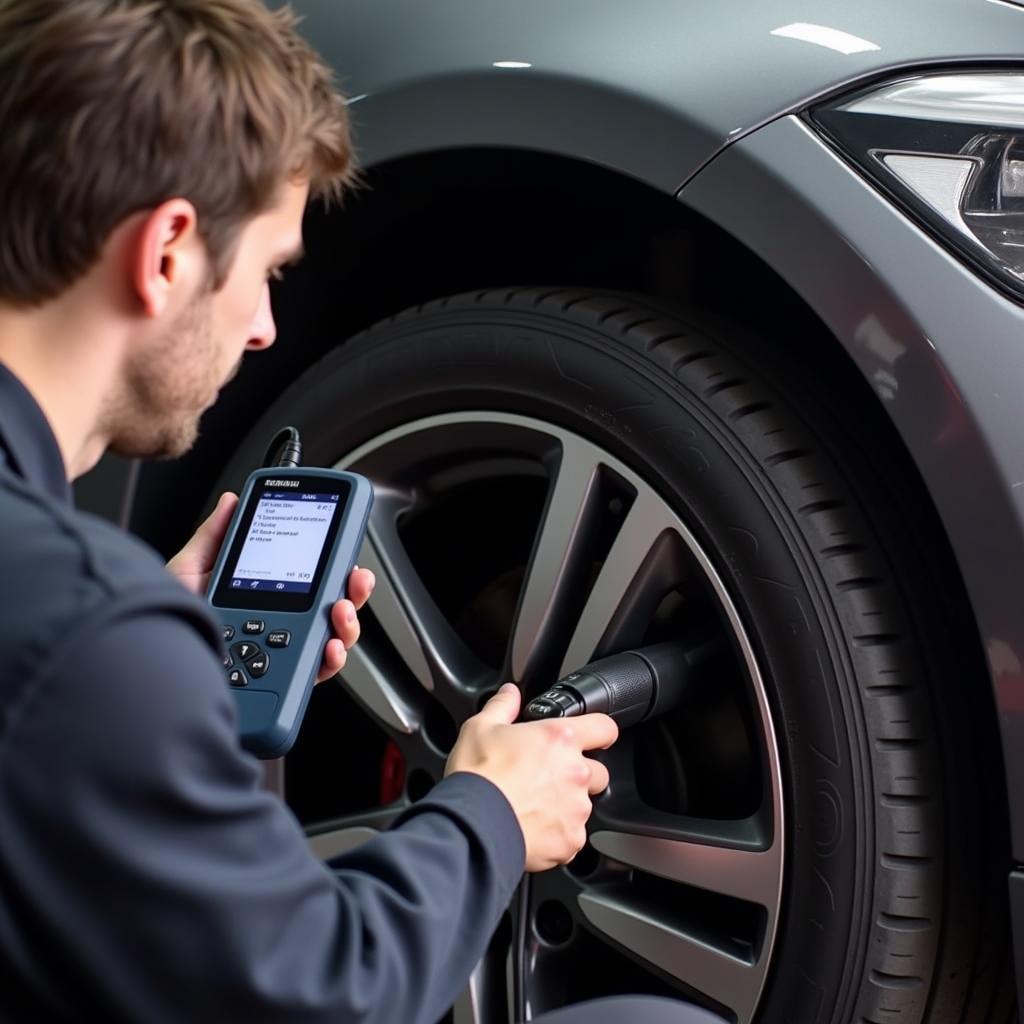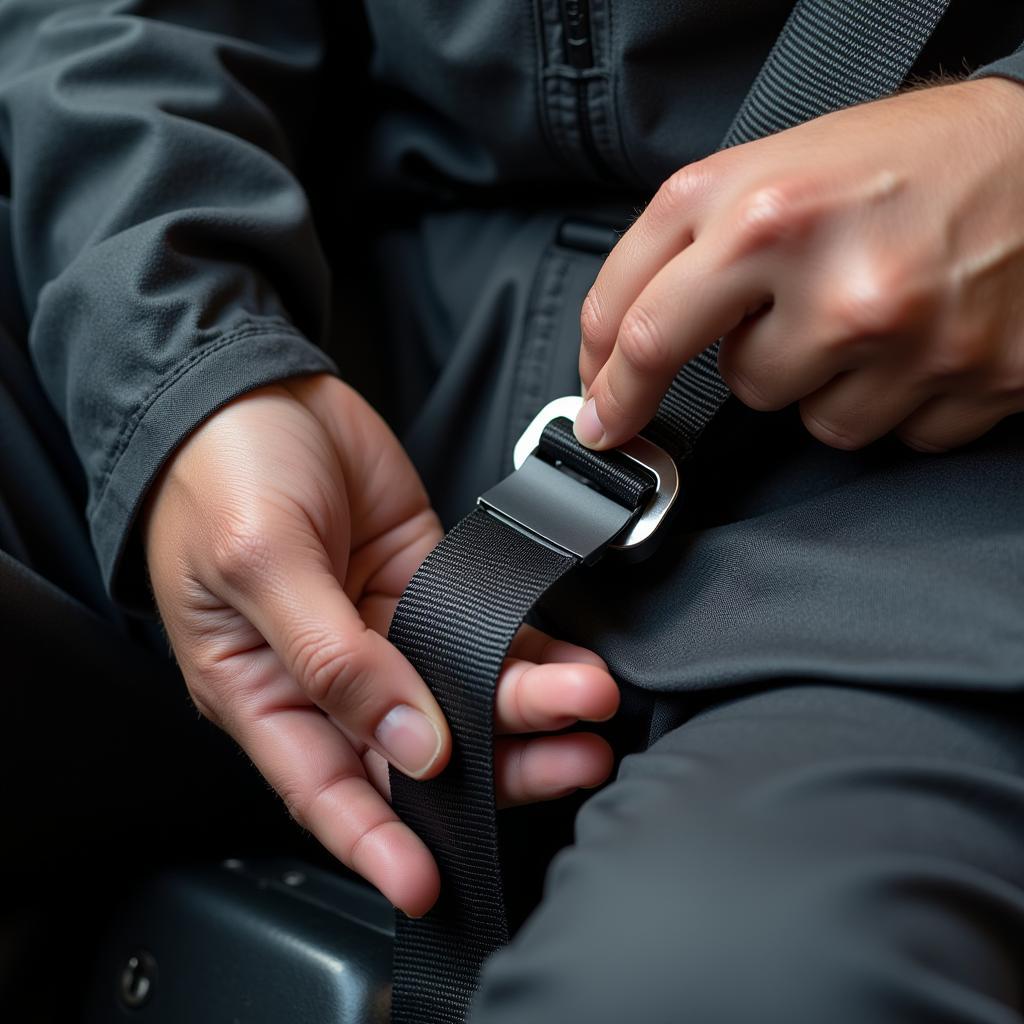The brake pad warning light on your BMW 1 Series is a crucial safety feature, illuminating when your brake pads wear down and require replacement. Ignoring this warning can compromise your braking performance and lead to costly repairs. This comprehensive guide provides everything you need to know about the BMW 1 Series brake pad warning light, including understanding its causes, potential solutions, and preventative measures.
Understanding Your BMW 1 Series Brake Pad Warning Light
Your BMW 1 Series monitors the condition of your brake pads using a sensor that triggers the warning light on your dashboard. This light, often a circle with an exclamation mark inside, may also be accompanied by a message like “brake pad wear.”
Common Causes of Brake Pad Warning Light Activation
While worn brake pads are the most common culprit, other factors can trigger the brake pad warning light in your BMW 1 Series:
- Worn Brake Pad Sensor: The sensor itself can malfunction due to damage, corrosion, or electrical issues.
- Low Brake Fluid: A drop in brake fluid level, often caused by a leak, can trigger the warning light.
- Faulty ABS System: Problems with the Anti-lock Braking System (ABS) can sometimes cause the brake pad warning light to illuminate.
What to Do When Your BMW 1 Series Brake Pad Warning Light Turns On
If the brake pad warning light illuminates, it’s crucial to address the issue promptly. Here’s a step-by-step guide:
- Check Your Brake Pads: Inspect your brake pads for visible wear. If the friction material is significantly thin or you notice metal scraping against the rotor, it’s time for a replacement.
- Inspect Brake Fluid Levels: Ensure your brake fluid reservoir is filled to the appropriate level. If it’s low, add the correct brake fluid type as specified in your BMW owner’s manual.
- Seek Professional Diagnosis: If you’re unsure about the cause or notice additional symptoms like grinding noises, pulling to one side while braking, or a spongy brake pedal, consult a qualified mechanic specializing in BMWs.
 BMW mechanic diagnosing a brake problem using a diagnostic tool
BMW mechanic diagnosing a brake problem using a diagnostic tool
Can I Drive with the Brake Pad Warning Light On?
Driving with the brake pad warning light on is highly discouraged. Continuing to drive with worn brake pads can lead to:
- Reduced Braking Performance: Your car will require a longer stopping distance, increasing the risk of accidents.
- Damage to Rotors: Worn brake pads can damage the rotors, leading to costly repairs.
- Complete Brake Failure: In extreme cases, ignoring the warning light can lead to complete brake failure.
“Addressing brake issues immediately is non-negotiable,” says Mark Stevenson, a veteran BMW mechanic with over 20 years of experience. “Driving with worn brake pads isn’t just about replacing parts; it’s about ensuring your safety and the safety of others on the road.”
Resetting the BMW 1 Series Brake Pad Warning Light
After replacing your brake pads or addressing the underlying issue, the warning light needs to be reset. This can be achieved using a specialized BMW diagnostic tool. While some DIY methods exist, it’s recommended to have a qualified technician reset the light to ensure proper functionality.
bmw-1-series-2013-brake-pad-warning-light-reset
Preventing Future Brake Pad Warning Light Issues
To prevent future brake pad warning light activations and maintain optimal braking performance, consider these preventative measures:
- Regular Brake Inspections: Have your brakes inspected at least once a year or every 10,000-12,000 miles by a qualified BMW mechanic.
- Brake Pad Replacement: Adhere to the recommended brake pad replacement intervals specified in your owner’s manual.
- Avoid Aggressive Driving: Harsh braking and rapid acceleration can accelerate brake pad wear.
- High-Quality Brake Pads: Opt for high-quality brake pads designed for your BMW 1 Series to ensure durability and performance.
what does the brake warning light mean
FAQs about BMW 1 Series Brake Pad Warning Light
Q: Can I reset the brake pad warning light myself?
While some DIY methods exist, it’s recommended to consult a qualified technician for resetting the light to ensure it’s done correctly and avoid potential issues.
Q: How much does it cost to replace brake pads on a BMW 1 Series?
The cost of brake pad replacement varies depending on factors like the model year, labor costs, and the type of brake pads used. On average, expect to pay between $250 and $500.
brake pad warning light mot failure
Q: How long can I drive with the brake pad warning light on?
Driving with the brake pad warning light on is highly discouraged. You should address the issue immediately to avoid potential safety risks and costly repairs.
bmw-1-series-2006-brake-pad-warning-light-reset
Q: Can I replace just the brake pads, or do I need to replace the rotors too?
Whether you need to replace the rotors depends on their condition. If they’re excessively worn or damaged, they’ll need to be replaced along with the brake pads.
bmw-3-series-brake-warning-light-reset
Conclusion
The brake pad warning light on your BMW 1 Series is a vital safety feature, indicating potential issues with your braking system. By understanding its causes, taking prompt action, and adopting preventative measures, you can ensure optimal braking performance and your safety on the road. Remember, professional diagnosis and timely maintenance are key to keeping your BMW 1 Series running smoothly and safely for miles to come.

